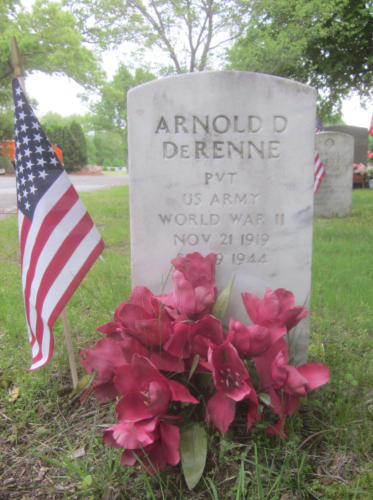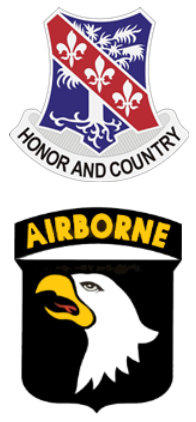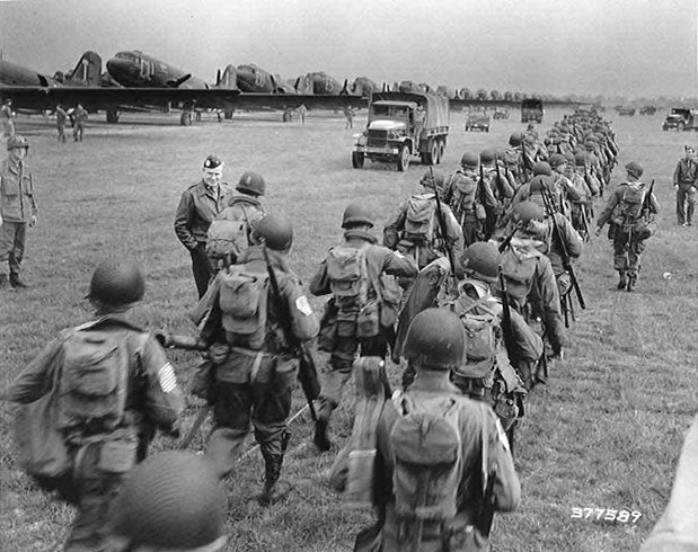
copyright © Wartime Heritage Association 2012-2024
Website hosting courtesy of Register.com - a web.com company
Wartime Heritage
ASSOCIATION
Remembering World War II
Name:
Arnold Douglas DeRenne
Rank:
Private First Class
Service Number:
31217301
Service:
Company E, 327th Glider Infantry Regiment,
101st Airborne Division, US Army
Awards:
Purple Heart
Date of Birth:
November 21, 1919
Place of Birth:
Wakefield, Middlesex Co., Massachusetts
Date of Enlistment:
November 30, 1942
Place of Enlistment:
Portland, Cumberland County, Maine
Age at Enlistment:
23
Address at Enlistment:
Baldwin, Cumberland County, Maine
Height:
5 feet, 5 inches
Occupation:
Farm hand
Marital Status:
Single
Date of Death:
September 19, 1944
Age:
24
Cemetery:
Forest Glade Cemetery, Wakefield,
Middlesex County, Massachusetts
Arnold Douglas DeRenne was the son of George H. DeRenne (1876–1950) born in Eel Brook, Yarmouth Co.,
NS, and Josephine A. (Gavel) DeRenne (1892–1965) born in Gavelton, Yarmouth Co., NS. His paternal
grandfather George Henry DeRenne (1846-1896) was a fresco painter born in Amiens, France who
immigrated to Canada in the 19th Century.
In 1920 and 1930, the family was living on Cordis Street in Wakefield, Mass. In 1940, the family lived in
Baldwin, Cumberland Co., Maine. At the time of his enlistment, Arnold was single and employed as a farm
hand.
After enlistment in 1942, Arnold served in Company E, 327th Glider Infantry Regiment of the 101st Airborne
Division in the US Army.
In the fall of 1942, the 327th headed to Ft. Bragg, North Carolina to began training with CG-4a ‘Waco’
gliders.
Landing in a glider wasn’t easy and some of the landings resulted in serious injuries as the glider snagged
trees or fence posts, tearing up the men inside. Still, it allowed a platoon of troops to deploy relatively close
without having to assemble before conducting their mission.
On September 5, 1943, the whole of the 101st Airborne Division departed New York and set sail for England.
On September 15th the 327th Glider Infantry Regiment unloaded from the RMS Samaria (formerly the SS
Samaria of the Cunard White Star Line) at Liverpool, England. They were then moved to Camp Ranikhet in
Tilehurst, near Reading, where they continued to train and learn about the British Horsa gliders. During the
winter, code names and emblems were given to each unit. The 327th received the code name "Keepsake"
and the "Club", or trefoil, emblem. The 327th participated in two Command Post exercises during December
of 1943. The first exercise was on December 10-11, and the second was December 28-29. These exercises
included parachute jumps, glider landings, and supply drops. In the early part of 1944, the troops began
preparing for D-day with three different exercises.
When the Allied commanders decided to drop both the 82nd and 101st Airborne Divisions simultaneously into
Normandy on D-Day June 6, 1944, the number of available aircraft to tow gliders was greatly reduced.
Therefore the 327th Glider Infantry Regiment was not fully committed to battle until the day after the
invasion, put ashore by landing craft on the beach at Utah with the 4th Infantry Division.
When the regiment was assembled, they marched to Carentan to cut off the fleeing Germans. The regiment
reached Carentan on June 9th. At 2200 hours on the following day, the 327th attacked a bridge over the
Canal de Vire-et-Taute and advanced through a wooded area, where they became pinned under heavy fire.
The regiment received reinforcements form in the from of the 29th Infantry Division helping to breakthrough
the German lines and capture the high ground.
Although causalities were high, they accomplished their mission and the regiment was removed to England,
arriving in Southampton, in Hampshire, England on July 13, 1944, to prepare for its next mission.
The next combat operation for the regiment was Operation Market Garden, the airborne invasion of Holland.
Unlike General Gavin, General Maxwell Taylor, commander of the 101st Airborne Division, opted to dedicate
his glider regiment early and wait on his artillery. This meant that the 327th saw combat much earlier than
the 325th Glider Infantry Regiment.
On September 18 (D+1), over 160 gliders took off
from England destined for Holland. Another 40
gliders arrived on the following day. The 327th
landed at Landing Zone W and immediately took
up positions around the village of Son in the Son
en Breugel Municipality. No sooner had they
landed when they were attacked by the 107th
Panzer Brigade hoping to recapture the Son
bridge. The glider troops managed to hold them
off for two days, until the Germans finally gave up
and refocused their efforts further north. Arnold
was killed in action in the fighting on September
19, 1944.
Angus Douglas DeRenne


Sources
findagrave


Members of the 327th GIR march to waiting gliders on Sept. 18, 1944



- World War I - Menu
- WWI Stories and Articles
- Photos - Yarmouth Soldiers
- Selection of World War I Songs
- WWI Casualties of Yarmouth, NS
- Those Who Served - Yarmouth, NS
- WWI Casualties Digby Co. NS
- WWI Casualties Shelburne Co. NS
- Merchant Mariners (1915) Yarmouth, NS
- Canadian Forestry Corps - Non Yarmouth Birth/Residence Enlistments
- US Draft Registry - Yarmouth NS Born


- World War II - Menu
- WWII Stories and Articles
- Telegraphist Air Gunners
- WWII Casualties of Nova Scotia
- US Casualties with NS Connection
- Far East/Pacific Casualties with NS Connection
- Merchant Navy Casualties Nova Scotia
- Nova Scotia WWII Casualties Holten Canadian War Cemetery
- D-Day Casualties - Nova Scotia
- CANLOAN Program Casulaties - Nova Scotia
- Battle of the Bulge Casualties - Nova Scotia
- WWII Casualties Yarmouth NS
- Yarmouth Casualties - RCAF RAF Canadian Army WWII
- Yarmouth Co., Marrages WWII
- Casualties Non-Born/Residents with Connection to Yarmouth Co., Nova Scotia.
- WWII Casualties Digby Co., NS
- Non-Nova Scotian WWII Casualties Buried in Nova Scotia
- WWII RCAF Casualties Aged 16-18
- Brothers/Sisters Who Served - World War II













